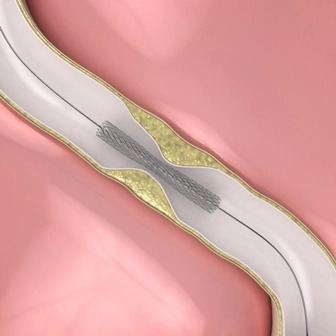CPT® 2019 is Coming! Are You Ready for These PICC Updates?

Check out new codes 36572 and 36573. “Every year, CPT® makes additions and changes to their codes,” says Carol Hodge, CPC, CDEO, CCC, CEMC, certified medical coder at St. Joseph’s Cardiology in Savannah, Georgia. “It is important to prepare every year for the new coding changes to ensure correct coding and not to miss any new coding opportunities that may become available.” Read on to learn all about the new peripherally inserted central venous catheters (PICC) codes changes and other miscellaneous additions to be aware of. Tackle These PICC Additions, Revisions Additions: Don’t miss these two new peripherally PICC codes for 2019: These two new codes were created to describe PICC line procedures that bundle imaging guidance, image documentation, and all associated radiological supervision and interpretation, says Cynthia A. Swanson, RN, CPC, CEMC, CHC, CPMA, senior manager of healthcare consulting for Seim Johnson in Omaha, Nebraska. “PICCs may be placed or replaced with or without imaging guidance,” explains Swanson. “The PICC line CPT® codes were referred from the Relativity Assessment Workgroup (RAW) to bundle imaging. One goal of the RAW is to identify potentially mis-valued services using objective mechanisms for reevaluation.” Revisions: You will also see some PICC revisions. (Additions are underlined for emphasis.) “The introductory language and parentheticals have been updated to assure that CPT® codes 36568 and 36569 are used to report PICC placement ‘without imaging guidance’ and code 36584 is revised ‘to include imaging guidance, image documentation, and radiological supervision and interpretation’ required to perform the replacement of a PICC,” according to Swanson. “The central venous access procedures guidelines in the CPT® codebook are updated to reflect these changes.” This change will assist in the accurate coding, reporting, and billing of PICC services in today’s healthcare environment, including updated relative value unit (RVU) assignments and corresponding reimbursement for these new and revised PICC codes, Swanson explains. Don’t Overlook These Miscellaneous Additions Check out these other miscellaneous CPT® 2019 additions you don’t want to miss: Code +33866: Don’t miss +33866 (Aortic hemiarch graft including isolation and control of the arch vessels, beveled open distal aortic anastomosis extending under one or more of the arch vessels, and total circulatory arrest or isolated cerebral perfusion (List separately in addition to code for primary procedure)). “Endovascular repair procedures of the descending thoracic aorta is the add-on code for +33866, which is an IVUS procedure,” explains Julie-Leah J. Harding, CPC, CPMA, CEMC, CCC, CRC, CPEDC, RMC, PCA, CCP, SCP-ED, CDIS, AHIMA-approved ICD-10 trainer and ambassador and director of revenue operations at Boston Children’s Hospital in Boston, Massachusetts. “IVUS use high-frequency sound waves to create a motion picture of the patients’ coronary arteries. This is essentially a cardiac catheterization CPT®. Code 83722: Check out 83722 (Lipoprotein, direct measurement; small dense LDL cholesterol) — a lab study procedure ideally to identify patients with hereditary high LDL or LPA lipoprotein(a) deficiency, Harding explains. This is a congenital defect. Diet does not influence this ailment. “Those patients with LP elevation are at severe cardiac risk and stroke,” according to Harding. “There is no cure. Recent trials have patients taking biweekly or monthly doses ofPCSK9 inhibitor. i.e. Repatha.” Harding adds that this test is to be proposed to be a part of annual physical exams. “I am familiar sadly with this as my husband is status post eight right-sided strokes. After multiple providers and specialists, the cause was LPa,” Harding continues. “You can have a normal cholesterol panel and have an elevated LP study. I would hope to see this test a part of annual physicals. I welcome and embrace this test.” When it comes to preparing for all of the CPT® updates and changes, documentation is key, according to Harding. “Documentation is the biggest take-away with these codes,” Harding explains. “Detail the anatomical presentation and be equally diligent to ensure the provider is complete, describe the provider’s role, and transparent.” Code 93264: Learn more about new code 93264 (Remote monitoring of a wireless pulmonary artery pressure sensor for up to 30 days, including at least weekly downloads of pulmonary artery pressure recordings, interpretation(s), trend analysis, and report(s) by a physician or other qualified health care professional). “This is a sensor that is implanted into the pulmonary artery to monitor the pressure in the patient’s pulmonary artery and their heart rate,” Hodge explains. “Studies have shown this is a way to monitor the status of a patient’s heart failure allowing physicians to intervene quickly when problems arise and may result in decreased inpatient admissions for control of heart failure.” Hodge further adds, “The sensor transmits data through a bedside electronic unit. The code requires at least weekly downloads of the pulmonary artery pressure recordings, interpretation, trend analysis and report.”




